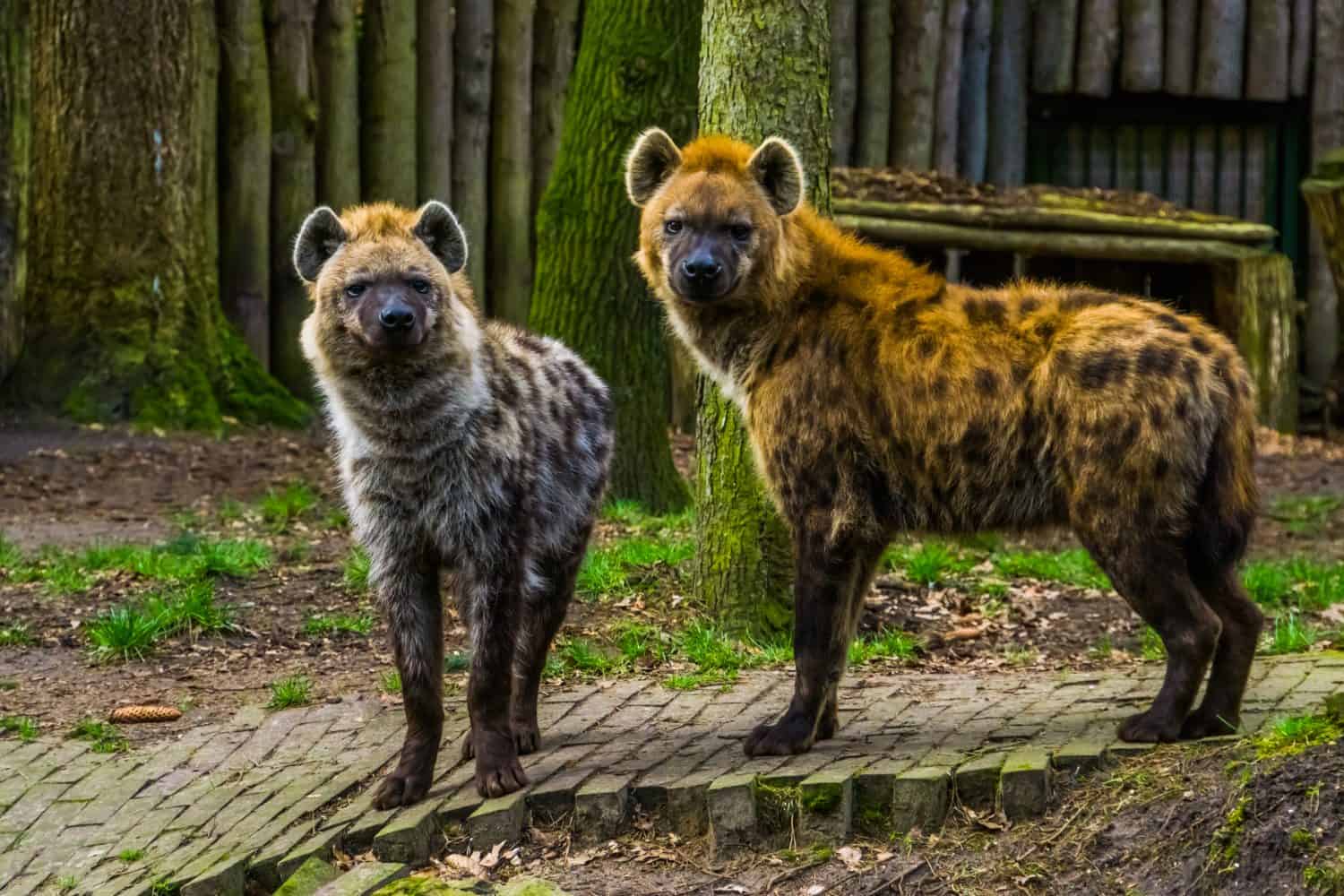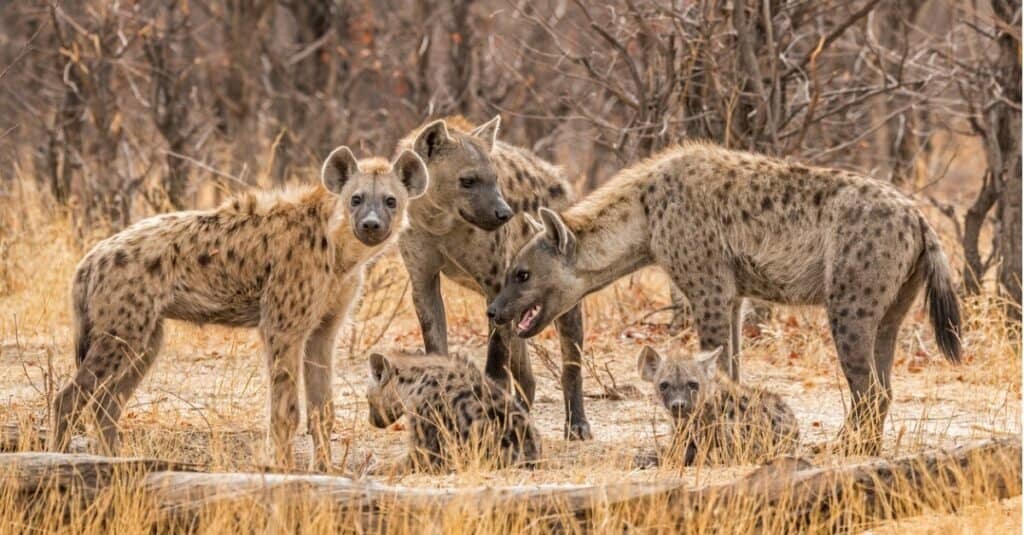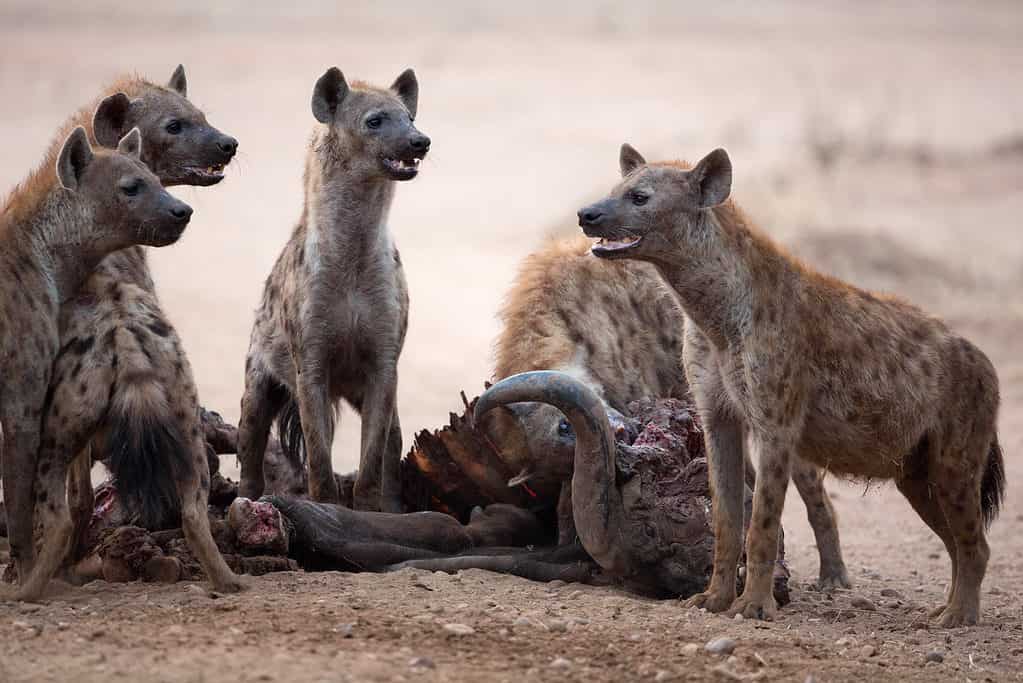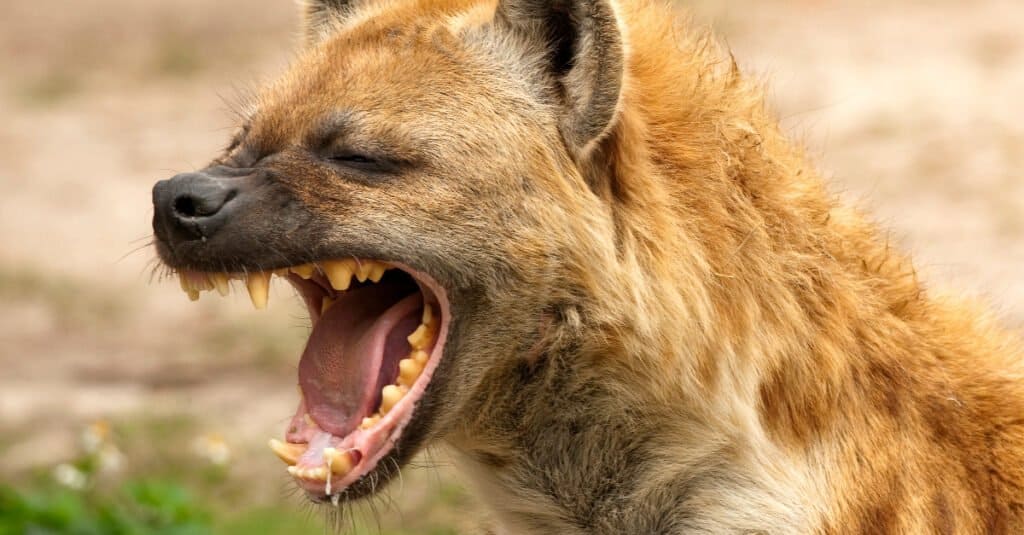Despite their less-than-cute-and-cuddly appearance, hyenas deserve a much better reputation than what the media portrays. These fascinating creatures are far more intelligent and social than the mindless scavengers seen in films like Disney’s The Lion King (1994). There are four different hyena species, and one even survives on an insect-only diet! However, the most common and recognizable of the four is the spotted hyena (Crocuta crocuta). These clever hyenas live in complex social groups where both males and females work together to hunt, raise young, and defend their territory. Let’s look at some of the key differences between male vs. female spotted hyenas!
Male vs. Female Hyenas
| Male Hyenas | Female Hyenas | |
|---|---|---|
| Size | 100 to 130 pounds | 120 to 150 pounds |
| Appearance | Males have a real penis. | Females have a “pseudo-penis” and are larger than males. |
| Social Life | Males are the lowest-ranked members of the clan and follow the females’ lead. | Females lead the clan and have a higher ranking than any of the males. |
| Behavior | Males are less aggressive than females. | Females are much more aggressive than males. |
1. Male vs. Female Hyenas: Size

Female spotted hyenas are stronger and heavier than males.
©Charlotte Bleijenberg/Shutterstock.com
Males are usually larger than females in the other three species of hyenas (brown hyenas, aardwolves, and striped hyenas). However, spotted hyenas are very different: these females are bigger and stronger than the males!
On average, male spotted hyenas weigh 100 to 130 pounds, while females can tip the scales at 120 to over 150 pounds. Both male and female spotted hyenas have yellowish and grayish fur with dark spots that fade as they age. They are around 3 to 5 feet long and stand 2.5 to 3 feet tall at the shoulder.
2. Male vs. Female Hyenas: Appearance

Giving birth is dangerous for female hyenas, as they do not have a vaginal opening like other mammals.
©iStock.com/Franz Schallmeiner
Not only are female spotted hyenas larger than males, but they have a “masculinized” appearance, which means that they also look like males. When early Europeans first saw them, some believed there weren’t any females at all!
One of the most unusual things about female spotted hyenas is, unlike other mammals, they have external genitalia. Their clitoris is so large and long that it looks nearly identical to the male’s penis — which is why scientists call it a “pseudo-penis”, which means that even though it isn’t a real penis, it looks like one. The female also has a fused labia filled with fatty tissue that looks like a pair of testicles.
What is even more extraordinary is that female hyenas use this pseudo-penis for everything — they urinate with it just like males and use it to mate. Female hyenas even give birth through the pseudo-penis! This makes it extremely difficult to tell male and female spotted hyenas apart based solely on their appearance.
3. Male vs. Female Hyenas: Social Life

Spotted hyenas eat their entire kill, including the bones.
©Jez Bennett/Shutterstock.com
Hyenas live in groups called “clans” with a very distinct hierarchy led by the females. The head of the clan is referred to as the “matriarch”, and her daughters inherit her high rank. Even as babies, the matriarch’s daughters outrank the oldest female hyenas in the clan. Her sons, however, are not as privileged and eventually have to leave the clan when they get older.
Many hyena clans consist of several different families who work together to defend their territory and hunt. After a kill, the highest-ranking females get to eat first, followed by their cubs and close family members.
4. Male vs. Female Hyenas: Behavior

Although spotted hyenas occasionally scavenge, they are primarily predators who hunt and kill for their food.
©iStock.com/dlrz4114
Female hyenas are more aggressive than males. Scientists believe that they are exposed to more androgen than males before they are born, leading to higher levels of aggression. Food is tough to come by for hyenas, and females need a lot of energy to raise their cubs. This suggests that natural selection has favored strong, aggressive females who can fight for the best food.
Higher-ranking females also seem to have better health: their blood has better defensive proteins and their telomeres are longer. Recent research has shown that the babies of high-ranking female hyenas are exposed to higher levels of testosterone from their mother’s ovaries in the late stages of pregnancy. Studies also suggest female hyena cubs may be even more sensitive to the effects of testosterone than males are.
The photo featured at the top of this post is © iStock.com/Franz Schallmeiner
Thank you for reading! Have some feedback for us? Contact the AZ Animals editorial team.






